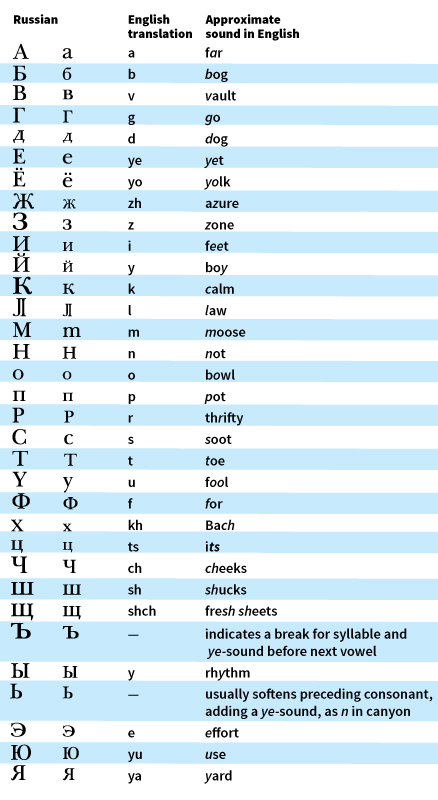Russian language is one of the world’s most important and widely spoken languages. It is one of the six official languages of the United Nations, along with Arabic, Chinese, English, French, and Spanish. Many scientific publications are written in Russian.

Russian is the official language of Russia and is an official second language of many countries of the former Soviet Union, which existed from 1922 to 1991. The language still serves those countries as the common means of communication among most ethnic groups. Russian is also an important second language in countries with large Russian immigrant populations, such as Israel.
Russian belongs to the eastern branch of the Slavic linguistic family. Ukrainian and Belarusian also belong to this branch. Russian is closely related to other Slavic languages, such as Bulgarian, Croatian, Czech, Macedonian, Polish, Serbian, Slovak, and Slovenian.
The Russian language used across the vast distances of the country of Russia is remarkably uniform. Its three main dialects—northern, central, and southern—do not differ radically from each other. Modern standard Russian is based on the central dialect, spoken in Moscow and surrounding areas. The language became fairly stabilized by the end of the 1700’s.
Alphabet.
The Russian alphabet has 33 letters. The alphabet is also called Cyrillic and is based on the Greek alphabet.
Pronunciation.
Most Russian consonants have two distinct pronunciations—an ordinary hard sound and a soft sound. Soft consonants are pronounced with the tongue raised toward the palate (roof of the mouth). Certain vowels normally indicate that any preceding consonant is soft, or palatalized. This palatalization is a distinctive feature of Russian speech. In most Russian words, one syllable is heavily stressed. In questions, the stressed syllable of the main word is pronounced a tone higher than the rest of the sentence. Russian spelling reflects actual pronunciation much more regularly than English spelling does.
Grammar.
Russian belongs to the Indo-European family of languages. Like German, Latin, and Greek, its words can have many different endings. Nouns have six cases and three genders. Adjectives change their forms to agree with the words they modify. Russian verbs have only three tense forms—present, past, and future. Completed, continued, and repetitive actions are expressed by aspect, an essential feature of all Russian verb forms. Word order in a Russian sentence is flexible, with important new information tending to appear near the end of the sentence.
Vocabulary.
Russian is a rich, expressive, and flexible language. Many Russian and English words have a common ancestor. Examples include the Russian word sestra and the English word sister, both derived from the Indo-European word swesor; and the Russian word moloko and the English word milk, from the Indo-European melg. Since the 1700’s, standard Russian has adopted many foreign terms. After the fall of the Soviet Union in 1991, the language borrowed hundreds of new words from English, such as Internet, displei (display), and videoklip (video clip). A few Russian words have been adopted into English, such as czar, vodka, and sputnik.
History.
All Slavic languages probably developed from an ancient Common Slavic language. The language of the Russian Orthodox Church, called Old Church Slavonic, resembles Common Slavic more closely than does any other existing language. Church Slavonic is a modified form of Old Church Slavonic, which played a role in the history of Russian similar to that played by Latin in the history of French, Italian, Portuguese, and Spanish.
Russian has many word pairs in which a native Russian word is used for a concrete, everyday meaning and an Old Church Slavonic term is used to express a more technical or abstract aspect. This feature of the language resembles word pairs in English, which often consist of a common word from Anglo-Saxon (house) and a more formal word from Latin through French (residence). The earliest formal literature was written chiefly in Old Church Slavonic, with some native Russian words and forms. By the 1000’s, a distinct Russian language existed and was used for legal and business documents. By the 1700’s, authors were writing works of literature in Russian, which gradually replaced Old Church Slavonic except for religious use.
